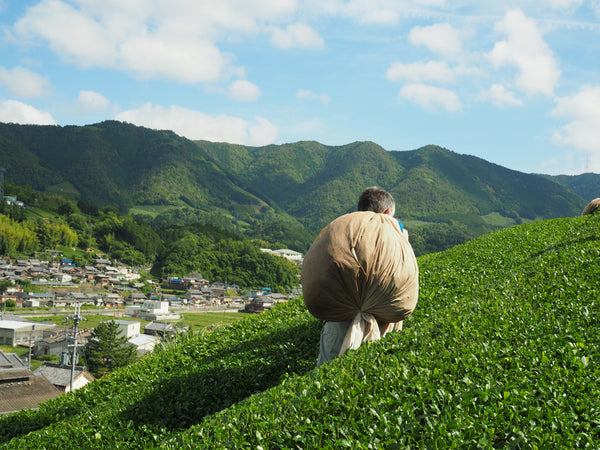We've talked about the inception of Japanese tea many times before. From tea's journey to Japan to modern-day tea practices. For example, iced matcha recipes. Believe it or not, Japan's elite class did not drink iced oat milk matcha lattes in the Edo period. Anyhow, today, we are shining a light on Uji, Kyoto, where Japanese green tea was truly born.

Where Is The Birthplace of Japanese Tea
Uji, a small town on the outskirts of Kyoto is where Japanese tea was born. Of course, as we’ve mentioned before, in the year 1191, a Zen priest named Eisai brought the tea seeds to Kyoto from China. Then, Buddhist monks began planting tea seeds around Kyoto’s temples and the surrounding towns. One of these towns was Uji. Nowadays, tea enthusiasts regard the Obukudani area at the foot of the sacred Mt. Jubu in Uji, as the very first birthplace of tea.
According to legend, the tea which farmers grew at Obukudani was highly regarded by the Imperial House for having the deepest aroma.
The Evolution Of Japanese Green Tea
Of course, at its inception, Japanese green tea was only accessible to the elite. Common folk, on the other hand, drank bancha. Bancha is a low grade of Japanese green tea which farmers made from some of the older, thicker leaves. Furthermore, bancha was not shaded. Strict restrictions on shading tea made bancha the only accessible tea for many Japanese people. While many enjoy bancha nowadays, back then it did not offer the fresh grassiness of a delicate first-flush green tea or matcha powder.
This all changed when in 1783, a tea farmer named Soen Nagatani, developed a new type of Japanese green tea after years of experimentation. This newly invented tea was sencha. Soen Nagatani cultivated this tea in Uji.
Following Nagatani’s invention of sencha, he traveled to Edo (present-day Tokyo) where he sold the tea. The tea quickly became Japan’s favorite. Furthermore, this started a new wave of brewing tea by pouring hot water over the tea leaves, rather than boiling them. Nowadays, his processing method for sencha tea is still the main method that farmers use in Japan.
In Japan, tea farmers called the traditional sencha manufacturing method “uji-cha.” Nowadays, tea enthusiasts use the term “uji-cha” only to refer to tea produced in Uji.
What Makes Uji Tea Special?
There’s no doubt, every tea-producing region in Japan has something about it that makes its tea special. While the most well-known tea-producing regions are Shizuoka and Kagoshima, Uji still holds a special place in the hearts of tea enthusiasts. Naturally, a big part of this is because of its special history. However, we must also note the regional specialties which make this a unique area for tea production. Some of these reasons are the misty weather, the exceptional soil quality, and the mild climate.
Since Uji has some of the oldest generational tea shops, it’s one of the best places in Japan to try tea produced completely by hand, using traditional methods.

What Are The Best Types Of Japanese Green Tea In Uji?
The best types of Japanese green tea to try in Uji are matcha, sencha, and gyokuro. However, when walking around Uji village, it is hard not to be tempted by the smell of roasted green tea - hojicha, which is also worth trying.
